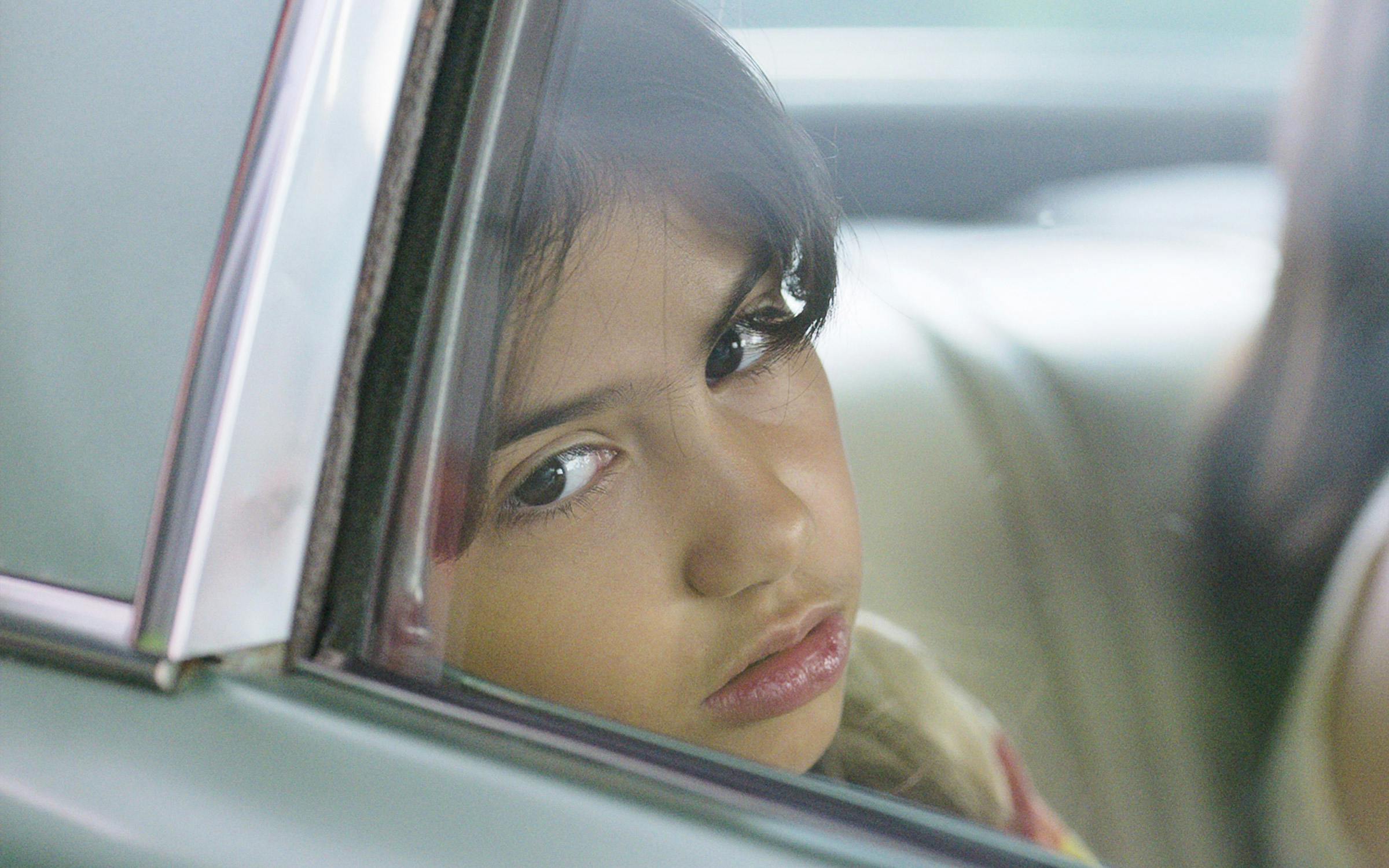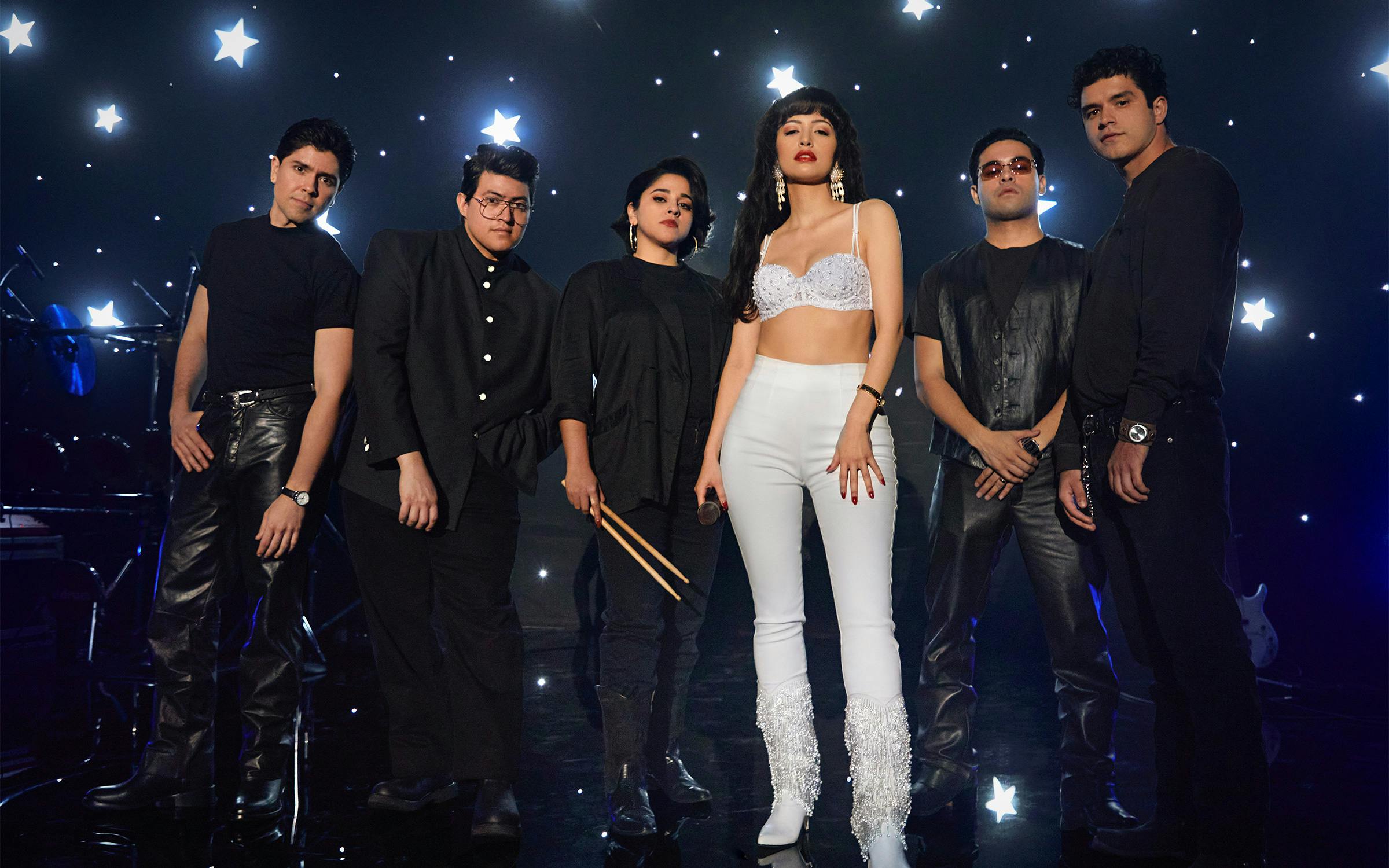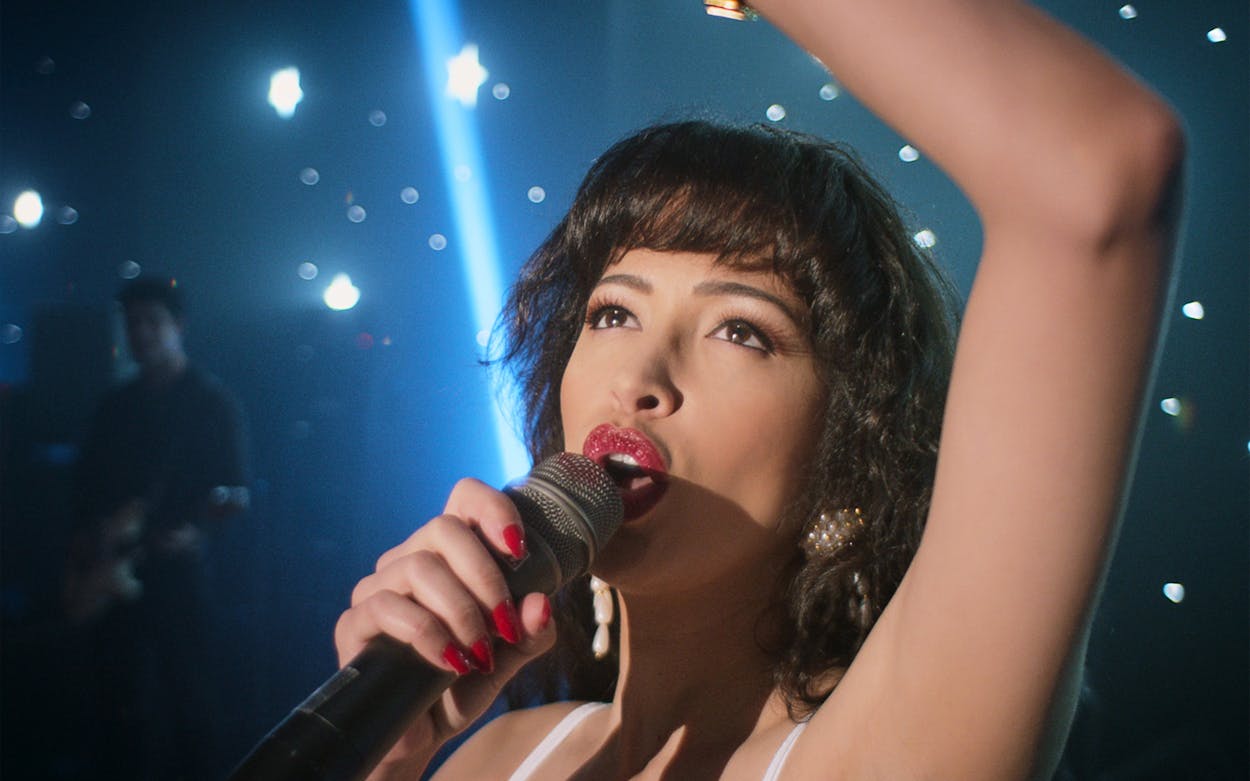Long before she was a record-breaking icon known as the Queen of Tejano, Selena Quintanilla was just a little girl in Lake Jackson.
But for younger fans like me who came to know her after her death in 1995, Selena was introduced to us as a fully formed star. She had a sense of style we idolized and dance moves that we practiced in our bedrooms. The musician was so worthy of adulation that a movie had already been released about her life (the biopic Selena, released just two years after her death), and there were multiple greatest hits albums we could listen to on repeat. In Selena: The Series, a new scripted television series out December 4 on Netflix, fans will get to see how she got there.
The series, one of the few Netflix Originals written, produced, and starring a predominantly Latino cast and crew, is broken up into two parts, with the second half set to premiere in 2021. Part one is made up of nine episodes, each about forty minutes long, that span the singer’s childhood, her early years on the road as part of the Tejano band Selena y Los Dinos, and the making of her first two albums, Selena (1989) and Ven Conmigo (1990). It only briefly introduces Yolanda Saldivar, the former nurse and fan club president who killed Selena, but just the mention of her name is enough to have you screaming at the screen, hoping that there’s some way the story might end differently this time.
While the eponymous 1997 biopic film provided an overview of Selena’s life over the course of its two-hour run time, the initial half of the television series takes a step back, tracing the first twenty years of Selena’s life and her rise to fame in more nuanced detail. While the format should allow the series more time and space for an in-depth look at the artist, it’s ultimately a missed opportunity—and viewers are more likely to walk away knowing more about the singer’s family members than about Selena herself.
In the first episode, Madison Taylor Baez plays an eight-year-old Selena, whose raw talent and love for singing inspires her father, Abraham, to start a family band. And though Selena and her siblings are much more interested in American pop and rock, their father suggests they sing Tejano music, appointing Selena, the youngest of her siblings, as the front woman, her brother A.B. as the bassist, and her sister Suzette as the drummer. Selena doesn’t ask her father to start a group, and it’s also not her idea to start performing around Corpus Christi and South Texas.
These first episodes are crucial to understanding the environment that Selena grew up in, and they don’t gloss over her family’s struggles. In one scene, Abraham grapples with his pride as his family has to use food stamps after losing their restaurant business, and in another, Selena and her siblings sleep on a mattress on the floor of their parents’ room after the family moves to a smaller house. Later, as the family begins performing as a group at local events, including weddings and birthdays, Abraham takes A.B. to a nearby restaurant, where he dumpster dives for peach cans to use in a DIY lighting setup.

A.B. and Suzette are compelling characters who get their own moments to shine throughout the show. As Selena’s older brother and Abraham’s only son, the burden often falls on A.B., played by Gabriel Chavarria, to problem solve and help propel the band forward. We follow his struggle as a budding songwriter and producer, then as a young father with his own responsibilities outside of the band. In later episodes, both Abraham and EMI record executives make it clear that if A.B. can’t keep writing hits, Selena’s ability to make an English crossover album hangs in the balance. Noemi Gonzalez does a masterful job playing Suzette, who often acts as Selena’s best friend and sounding board while also battling the self-doubt she feels about her role as the band’s drummer. But by the time Selena y Los Dinos are headed on cross-country tours and gearing up for the release of Selena’s debut album—more than halfway through the series so far—it feels as if we’ve hardly gotten to know the person it’s about.
Creating a show about a star as beloved as Selena is inevitably challenging. Twenty-five years after her death, her life has become so well documented that it’s hard to break new ground. Fans won’t be surprised, for instance, when a young Selena expresses an interest in fashion, because it’s widely known that she would eventually start her own boutique. They won’t wonder if the romantic tension between her and guitarist Chris Perez will be resolved, either, because they know that they’ll get married.
It’s also difficult when her fans and arguably her own family members (her father and sister serve as executive producers on the series) have spent the past two decades deifying Selena practically to the point of sainthood. The show has its moments of humanizing Selena, and showing fleeting glimpses of her that aren’t quite so polished. The Walking Dead star Christian Serratos eventually dons the singer’s famous bustiers and hoops, but we also get to see plenty of embarrassing fashion moments and questionable hairstyles—reminders that even Selena wasn’t immune to ample glitter and tacky eighties trends. But it rarely goes deeper than that.
The show does detail, though, how Selena struggled to square her Mexican American identity with the “exotic” label that EMI Records tries to market her under in the early nineties. When the stylists behind her first album cover ask her for her fashion and music influences, for example, she quickly cites American pop artists such as Madonna and Paula Abdul, to their obvious disappointment. And when her father challenges the way the record label is marketing Selena as a “world music” artist, the label executive replies that stores don’t have a bin for artists like Selena, “American girls of Mexican descent who happen to sing in Spanish.”
Abraham, played by Desperate Housewives actor Ricardo Chavira, is captivating but often frustrating to watch. Though his advice clearly comes from a place of love for his children, he can also stand in their way. Abraham calls the shots, makes business decisions without consulting the band, and constantly pushes musicians past their limits. In one scene, an exhausted A.B. wonders if they’ll ever be able to enjoy the success they’ve built. During these conflicts, Selena’s mother Marcella, played by Seidy López, rarely has anything to say. There are countless opportunities during these episodes for Selena to stand up for herself, vent her frustration, get angry, or even mess up. Instead, viewers see knowing glances between Selena and Suzette, who’s often Selena’s advocate when things get tough.
Friends, former classmates, and those who worked with her in the music industry remember Selena as someone who was loud and goofy, but also bold and strong-willed—a Latina raised as a Jehovah’s Witness who wore bustiers on stage and eloped at 21 years old. By contrast, the Selena portrayed in the series feels like she’s not in control. Major decisions just seem to happen to Selena rather than because of her. And though it’s her voice and her presence drawing in crowds, for much of the series she instead seems timid and grateful for the things that have come her way.

With the introduction in episode seven of her love interest and future husband, Chris Perez (played by Jesse Posey), Selena finally starts to make decisions for herself. When she first wonders whether Chris might have feelings for her, she asks A.B. to bring up the subject to him. When A.B. bristles at his sister’s suggestion, asking Selena, “What is this? High school?” She quickly responds, “I don’t know, I didn’t go to high school.” With Chris, Selena feels comfortable declaring her wildest dreams and, for the first time that we know of, keeping a major secret from her father, as she knows he won’t approve of their relationship. When Abraham does find out about Chris in the final episode, Serratos is finally able to portray Selena with more emotional range. In the last moments of season, she’s no longer the tranquil angel that she’s been for much of the show. Instead she’s furious, she’s in love, and she’s standing up to her dad.
Overall, watching the series is a bittersweet experience. It’s a delight to see Selena’s style evolve, to watch Serratos re-create some of her signature choreography, and to hear as A.B. tinkers with the first notes of what would become one of her biggest hits, “Como La Flor.” And for newer fans, and those less familiar with her story, the series is a great way to learn about some of Selena’s lesser-known songs, like “Besitos” and “Sukiyaki,” and to fall in love with her music for the first time.
The show also succeeds in documenting Selena’s rapidly growing fandom, as well as finding moments to showcase the young Latinas for whom Selena’s success was especially important. In the second episode, Selena has a long way to go before her big break, but during one of her sets, a young girl is so taken with Selena’s performance that she waits for her after the show to give her a rose. Selena’s brown skin and curves were part of what made her relatable to many of her fans. Since the show’s first trailer dropped, though, many were quick to express their concerns that Selena was being whitewashed, which points to a long history, both in Hollywood and in Latin American media, of largely hiring white or light-skinned actors to play Latinos.
Part two of the series will go on to cover Selena’s relationship with Chris Perez, the start of her clothing business, and the recording of her smash bilingual album, Dreaming of You, as well as her record-breaking final concert at the Houston Astrodome in 1995. While the first half of the show feels like a taste of what’s to come, it falls a bit flat. Hopefully, with Selena’s biggest years ahead of her, the series’s final episodes will offer a more complex portrait of the star leading up to her death.
- More About:
- Music
- Television
- Selena








